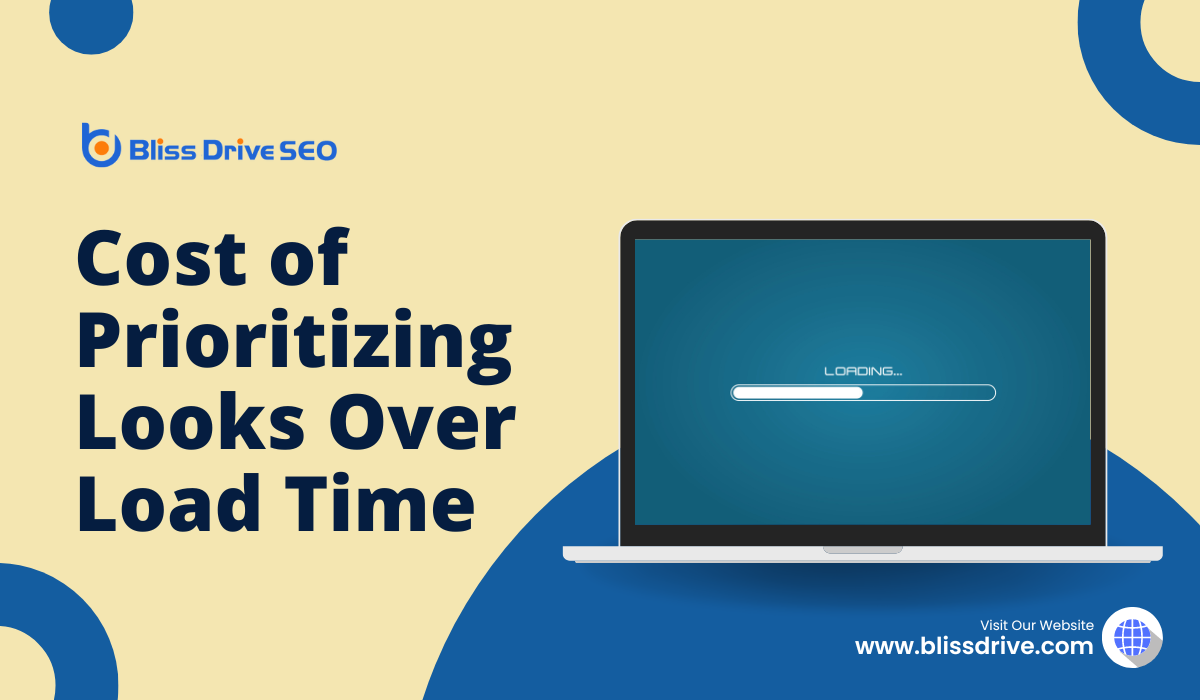Digital Marketing Services
Learn More About Us

Is your website a stunning visual experience but painfully slow to load? You might be losing visitors and potential conversions by the minute.
Prioritizing aesthetics over performance can leadA potential customer referred by an affiliate who has shown interest in the product or service but h... to several drawbacks:
Striking the right balance between aesthetics and performance is essential. In this guide, we'll explore why your site needs both beauty and speed and the hidden costs of prioritizing looks overload time.
Visually rich websites often have large files and complex elements. These include high-resolution images, videos, and intricate scripts. While visually appealing, they need more data and processing power. This can slow down webpage loading times. Slow pages frustrate users who expect quick access to information.
Search engines like Google prefer site speed in their ranking algorithms. Slow-loading sites can drop in search rankings, reducing organic trafficVisitors who come to a website through unpaid search engine results. and limiting conversionThe completion of a desired action by a referred user, such as making a purchase or filling out a fo... opportunities. SEO strategies must focus on speed to improve search visibility.
User engagement drops on slow-loading websites. Visitors are less likely to interact if they face delays. Slow response times can prevent deep engagement with content. This might stop users from signing up for newsletters, purchasing, or watching videos.
Long loading times increase bounce rates. If a site loads slowly, visitors may leave after viewing only one page. This not only affects immediate engagement but also reduces the likelihood of these users returning.

Slow site performance hurts the user experience. Delays and unresponsive pages can make a website seem less credible and professional. This reduces user trust and satisfaction. Negative experiences can also lead to users sharing dissatisfaction, deterring new visitors.
The impact of slow loading times is greater on mobile users. They often use less powerful devices and unreliable network connections. Mobile users expect quick, accessible content. Slow sites see higher mobile user drop-offs as these users switch to faster competitor sites.
Web performance is about how quickly and smoothly a website operates. It's vital because it affects how users experience the site. If a site loads fast and without glitches, users are more likely to stay, browse, and interact.
Several metrics help measure web speed. Load time measures how long it takes for a page to display on the screen. Time to First Byte (TTFB) is the time it takes for a browser to receive the first byte of data from the server. Time to Interactive (TTI) measures how long it takes for a page to become interactive.
These metrics are crucial because they impact user satisfaction. A fast site can improve user engagement, reduce bounce rates, and increase conversions.
On the other hand, slow websites can frustrate users, driving them away.
Visually rich websites attract users with their appealing designs and engaging content. These sites often feature high-quality images, advanced animations, and detailed graphics. They create a memorable experience to strengthen a brand's identity and engage visitors deeply.
But, these attractive elements can also slow down site performance if not properly optimized.
Prioritizing aesthetics can enhance visual appeal but should not compromise load times and functionality. Achieve the perfect balance by optimizing your website’s performance. Enhance user experience and SEO without sacrificing design.
Ready to enhance your website’s speed and maintain its beauty? Contact Bliss Drive today for expert content marketing and web optimization services. Let's make your website fast, functional, and attractive.
